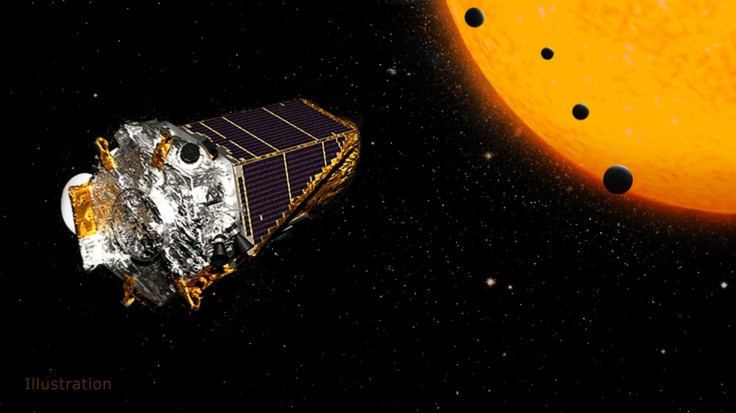Researchers Find Four Earth-Sized Planets Orbiting Sun-Like Star

A star called tau Ceti that is visible to the naked eye from Earth, just 12 light years away, has four Earth-sized planets orbiting it, a new study that will be published in the Astrophysical Journal reveals. The team working on the study is made up of an international group of astronomers who worked together to determine that two of the four planets are candidates for habitable worlds.
The planets have low masses, with the smallest one at a mass of 1.7 times that of Earth. Two of those are located within the habitable zone and could potentially have a liquid surface, according to a press release from the University of California Santa Cruz. But they also have “massive” amounts of debris circling them that makes them more vulnerable to asteroids and comets, making them less ideal in terms of habitability.
Read: Hubble Finds 'Hot Jupiter' Exoplanet Has Glowing Atmosphere Of Water
The team of researchers built on research they had done in 2013 and detected the planets by examining the wobbles of the sun-like star, tau Ceti, that the planets orbit. Modeling of large data sets from different observers made it possible for the team to differentiate between noise from stellar surface activity from small signals due to gravitational pulls from the Earth-sized planets orbiting the star. This helped them eliminate two possible planets thought to exist based on signals received during research in 2013.
To detect this difference the researchers examined the signals from the possible planets as well as the wavelengths. The star’s activity changed based on the wavelengths so the researchers used that to tell the star’s activity apart from that of the signals coming from the planets.
But even when using this technique the researchers found that there are definitely at least four rocky planets orbiting the star. Tau Ceti, the star that the planets orbit is strong enough that the planets might not be tidally locked, meaning all sides of them could potentially be exposed to the star at different times. Additionally the star is similar to our sun in size and brightness.
Read: NASA Artists Create Concepts Of 6 Famous Exoplanets
The research was done using data and information from the European Southern Observatory in Chile and the W.M. Keck Observatory in Hawaii. These planets join others that sit in the habitable zone of their stars. But some of those exoplanets orbit red dwarf stars that researchers are unsure would provide the correct conditions for life on those planets, even if they are in the habitable zone.
Red dwarf stars give off less energy than other stars do so they might not emit enough energy to keep planets in the traditional habitable zone warm enough. If the planets were close enough, then flares from the red dwarfs could put the planets at risk. The difference with tau Ceti is that it would not require planets be in that danger zone to get enough energy.
© Copyright IBTimes 2024. All rights reserved.





















